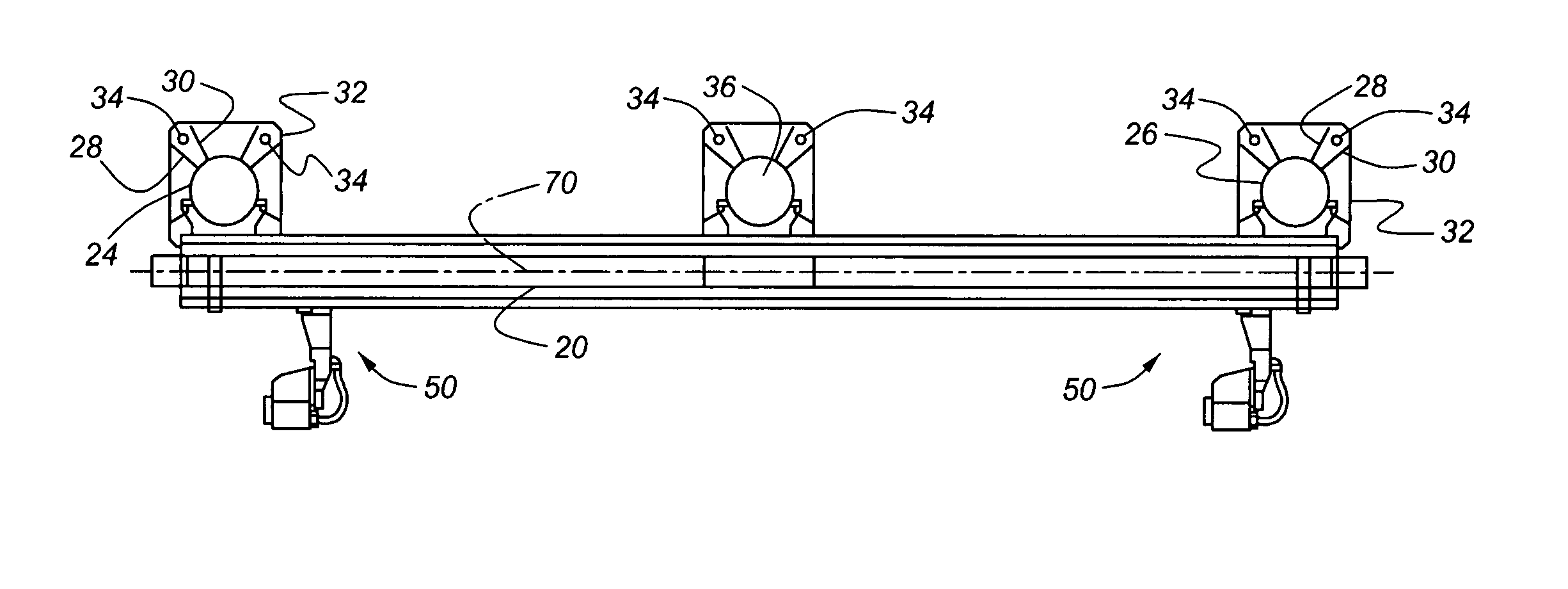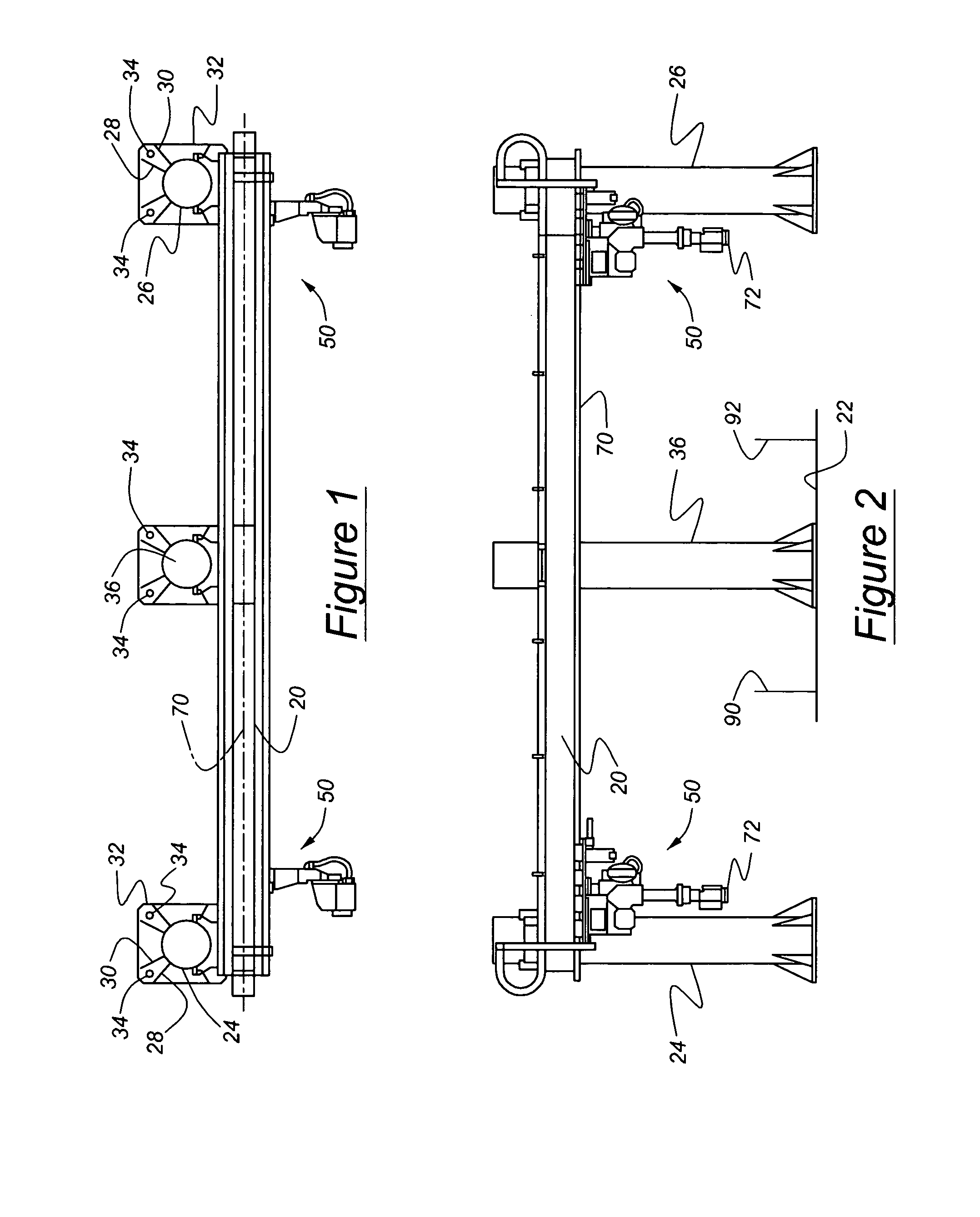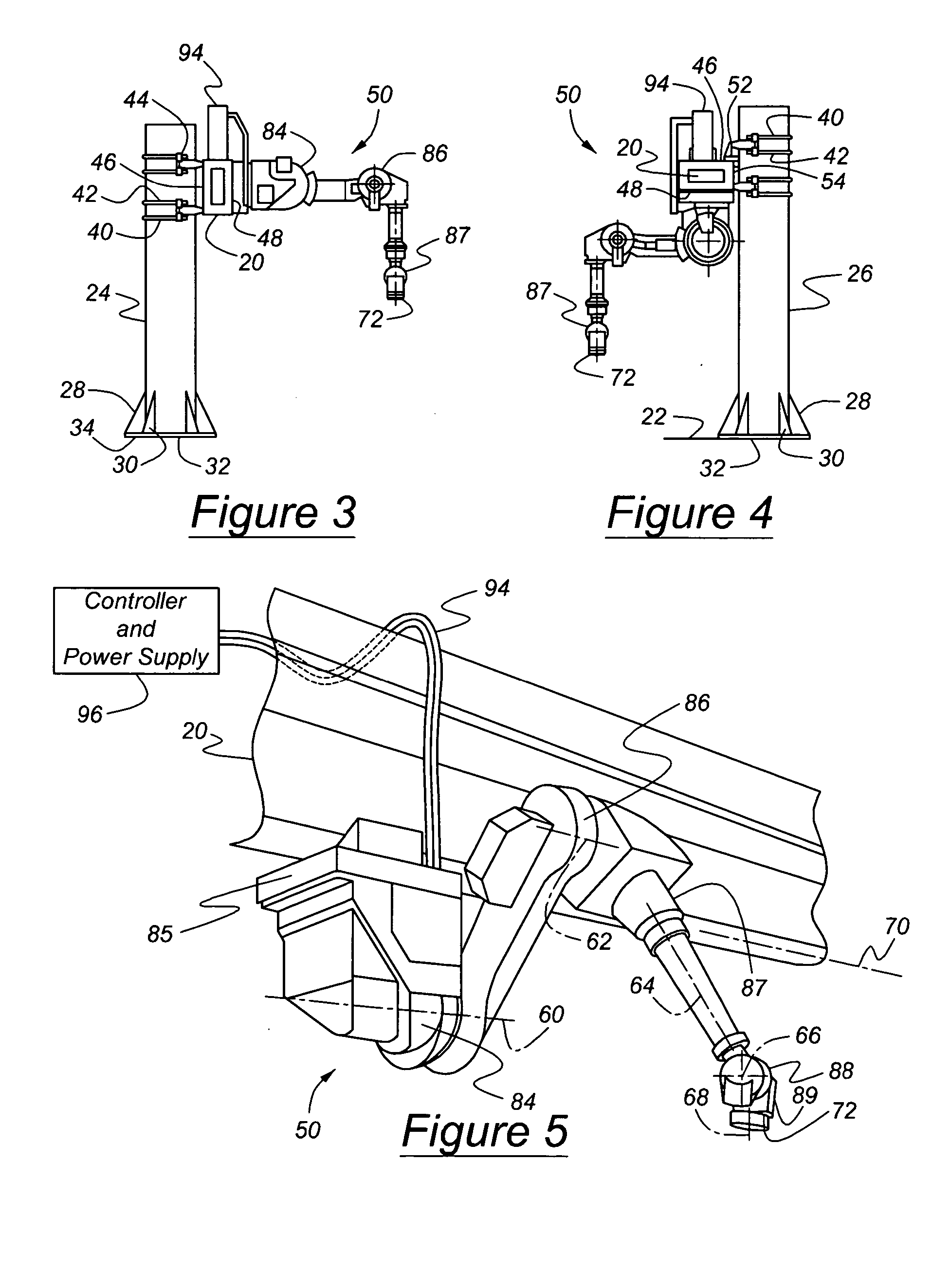Handling large, heavy workpieces using coordinated gantry robots
- Summary
- Abstract
- Description
- Claims
- Application Information
AI Technical Summary
Benefits of technology
Problems solved by technology
Method used
Image
Examples
Embodiment Construction
[0021]FIGS. 1-4 illustrate a rail 20 suspended above a workspace on the floor 22 of an industrial plant. The rail 20 is supported near each end by a column 24, 26, which is preferably in the form of a circular, cylindrical hollow tube. Located at the base of each column and extending radially from the column are pairs of flanges 28, 30, which are welded to the column and to a base plate 32. Bolts 34, located around the perimeter of the base plate 32, secure the base plate 32 to the floor 22 or to a footing located at or near the plane of the floor. When the span between the columns 24, 26 exceeds a predetermined length, at least one additional column 36, located between the end columns 24, 26, can be used to provide intermediate support to the rail 20.
[0022]FIGS. 3 and 4 show the rail 20 secured to and spaced a short distance from the columns 24, 26 by pairs of U-bolts 40, 42, which engage the circular cylindrical contour of the columns and are secured by fasteners 44 threaded onto...
PUM
 Login to View More
Login to View More Abstract
Description
Claims
Application Information
 Login to View More
Login to View More - R&D
- Intellectual Property
- Life Sciences
- Materials
- Tech Scout
- Unparalleled Data Quality
- Higher Quality Content
- 60% Fewer Hallucinations
Browse by: Latest US Patents, China's latest patents, Technical Efficacy Thesaurus, Application Domain, Technology Topic, Popular Technical Reports.
© 2025 PatSnap. All rights reserved.Legal|Privacy policy|Modern Slavery Act Transparency Statement|Sitemap|About US| Contact US: help@patsnap.com



